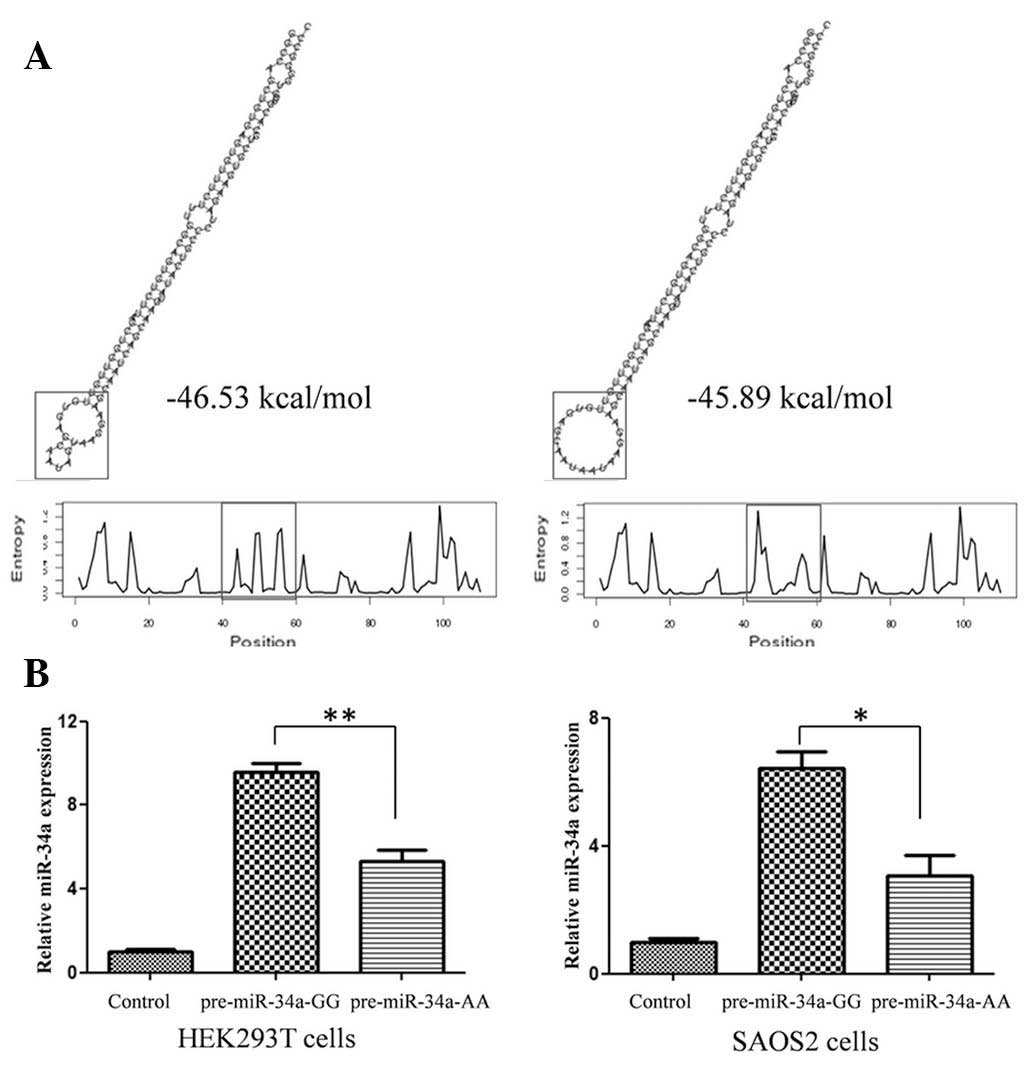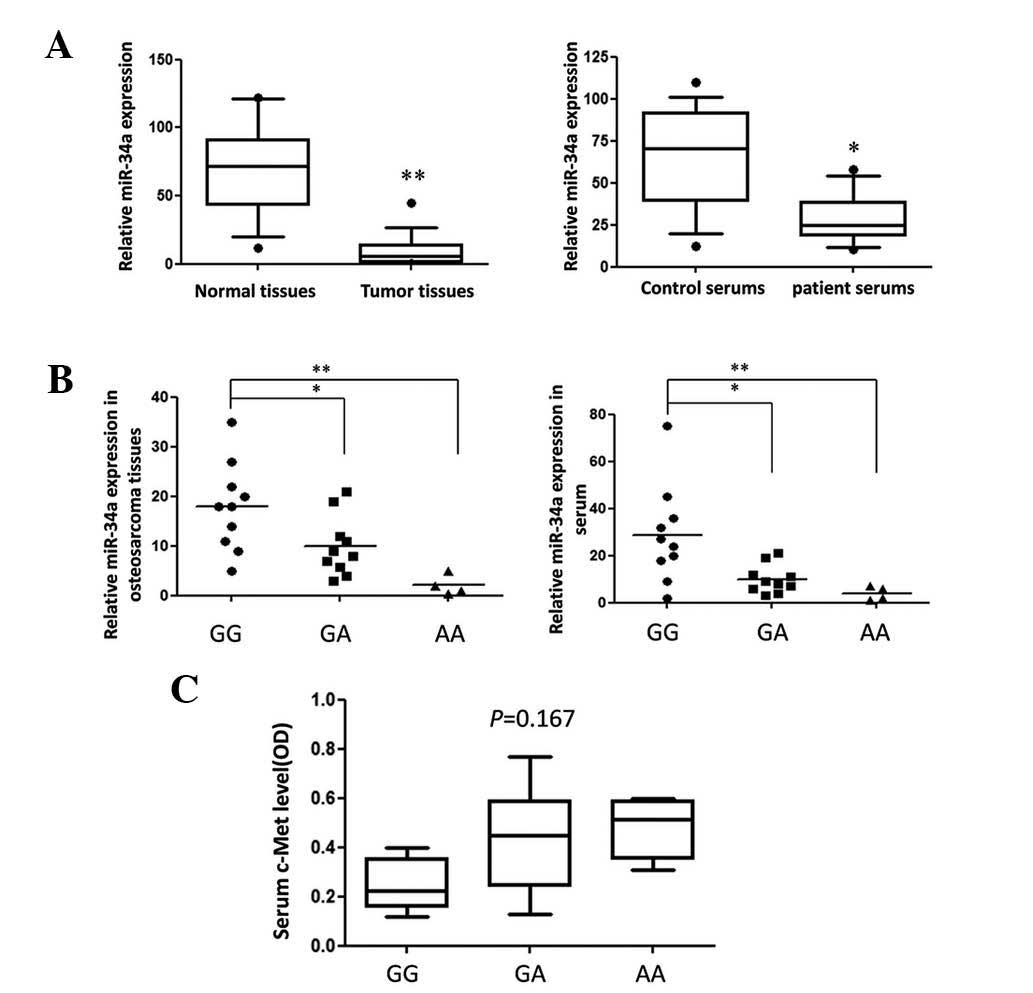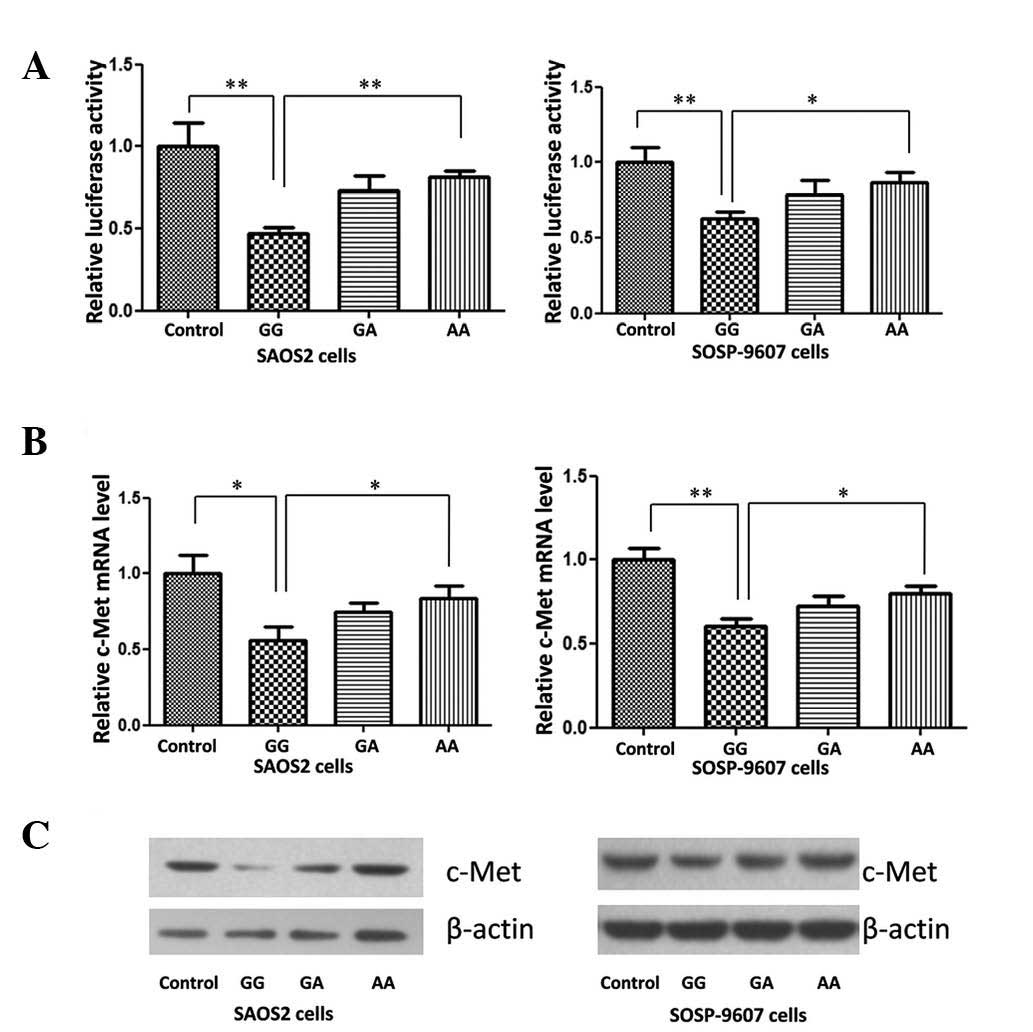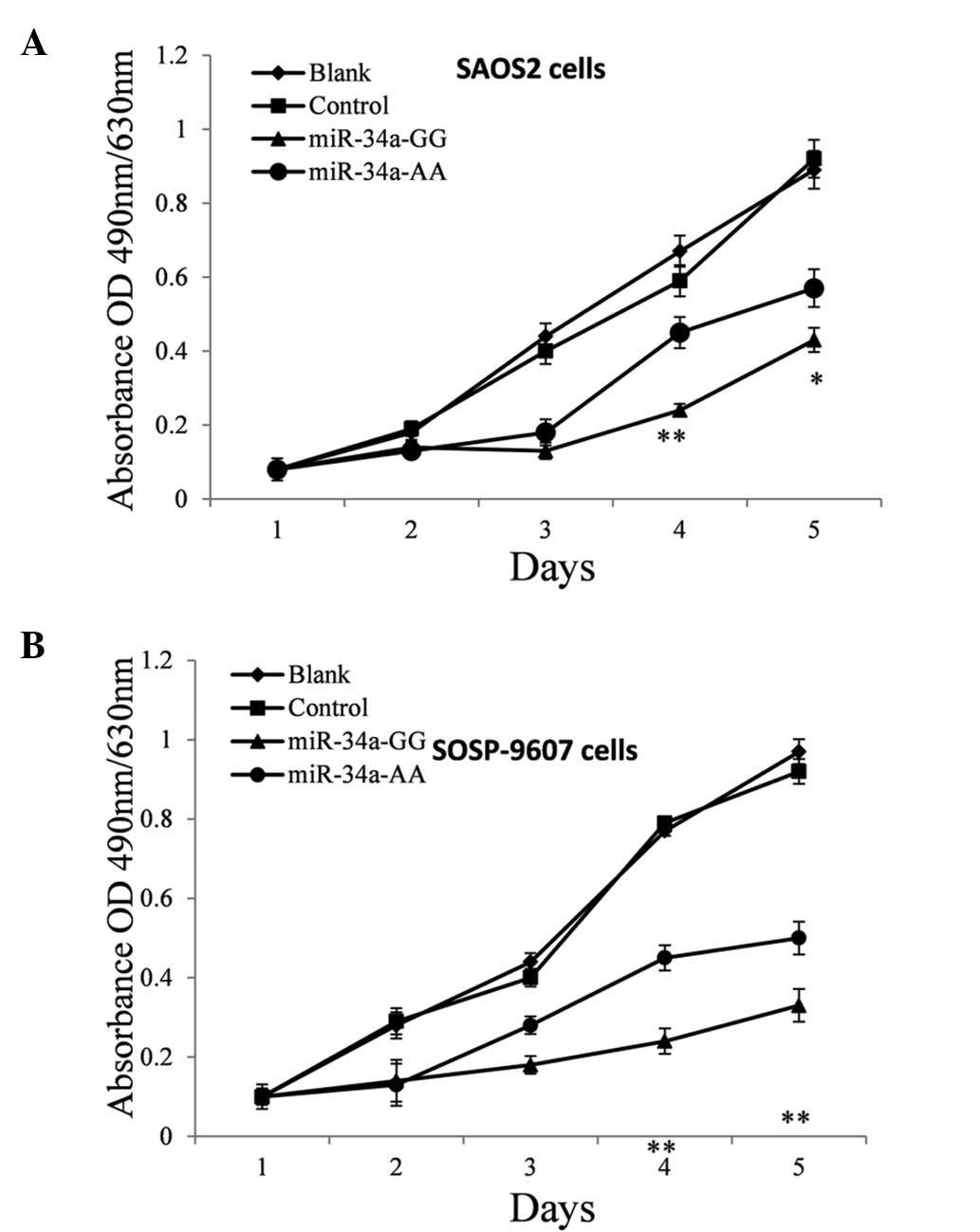A polymorphism site in the pre‑miR‑34a coding region reduces miR‑34a expression and promotes osteosarcoma cell proliferation and migration
- Authors:
- Published online on: September 18, 2014 https://doi.org/10.3892/mmr.2014.2582
- Pages: 2912-2916
-
Copyright: © Lv et al. This is an open access article distributed under the terms of Creative Commons Attribution License [CC BY_NC 3.0].
Metrics:
Total
Views: 0 (Spandidos Publications: | PMC Statistics:
)
Total PDF Downloads: 0 (Spandidos Publications: | PMC Statistics:
)
Abstract
Osteosarcoma (OS) is the most prevalent primary malignant bone tumor in children and young adults, its complex etiology involving a combination of environmental and genetic factors. MicroRNA (miRNA) is a short, non‑coding regulatory RNA molecule that represses gene expression by imperfectly base‑pairing to the 3' untranslated region of target mRNAs. Evidence has shown that alterations in the expression of miRNA are involved in the initiation, progression, and metastasis of human cancers. It is believed that miRNAs function both as tumor suppressors and oncogenes during cancer development. In the present study, three tumor-associated miRNAs (miR‑21, miR‑34a and miR‑146a) coding regions were screened in Chinese‑Han OS patients. A G>A variation in the pre‑miR‑34a coding region was found to be associated with higher OS morbidity. By detecting the mature miR‑34a expression in cells transfected with pre‑miR‑34a expression vectors of different genotypes using quantitative polymerase chain reaction, it was demonstrated that the G>A variation reduced miR‑34a expression in vitro. This was in accordance with the data collected from tumor tissue and patient serum samples. Subsequently, a dual‑luciferase reporter assay and western blot analysis were used to detect the site variation effect on the expression of c‑Met, a target gene of miR‑34a. The G>A variation downregulated the suppression of c‑Met in two OS cell lines. Furthermore, it was found that reduced miR‑34a expression decreased the suppression of OS cell proliferation in vitro. In conclusion, the present study established the association between miR‑34a and the risk of suffering OS in a Chinese Han population by identifying one functional single nucleotide polymorphism site in pre‑miR‑34a. These findings may give insight into the mechanism of OS development and create an opportunity to approach the diagnosis and treatment of OS.














